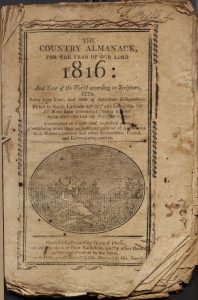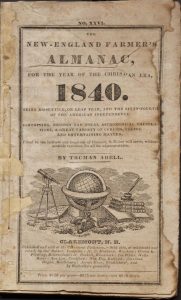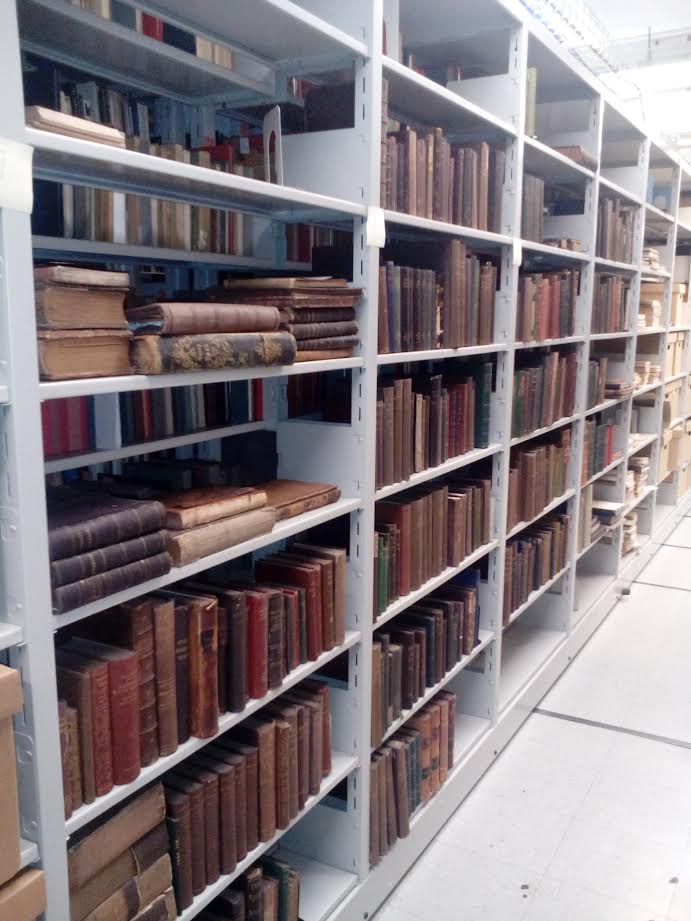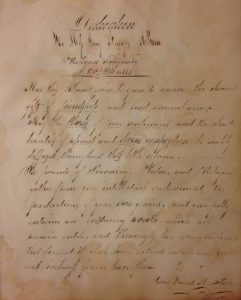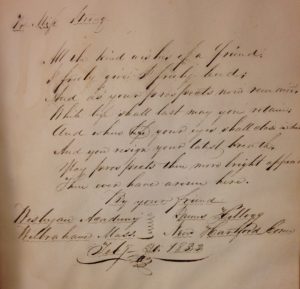[Posted by Jennifer Sharp M’11, a Project Archivist with the Watkinson Library]
In my previous post, I mentioned that the Charles P. Wells collection would be organized into three series: personal, business, and extended family. The personal series is the largest, comprising correspondence, Bible study notes, and other material related to Wells’ day-to-day life. The bulk of the correspondence dates from the 1830s and 1840s and is arranged alphabetically by author. Among those who wrote to Wells with regularity are his wife, Jane Strong Wells (when she was out of town), Henrietta Blake, Jerusha Clark, Emily Bond, Haynes Lord, S. Wells Williams (who spent time as a missionary in China), and H. W. Warner. It is a mixture of family and friends, as many of us have today. Nineteenth-century and 21st century correspondence have their similarities and differences, and the Wells collection provides the opportunity to examine some of these.
 Over the past few decades, as email has become part of our daily lives, we have grown accustomed to strings of messages gathered together. Pull up one message, and you can read all of them. Nineteenth-century correspondence lacked threads, and extant correspondence has a greater chance of being one-sided. This is not to say that you won’t find both (or all) sides of a conversation; it just isn’t as common as with our modern day communication. As I have sorted the correspondence, I found there are in fact pairs of letters within the collection.
Over the past few decades, as email has become part of our daily lives, we have grown accustomed to strings of messages gathered together. Pull up one message, and you can read all of them. Nineteenth-century correspondence lacked threads, and extant correspondence has a greater chance of being one-sided. This is not to say that you won’t find both (or all) sides of a conversation; it just isn’t as common as with our modern day communication. As I have sorted the correspondence, I found there are in fact pairs of letters within the collection.
There are certain conventions researchers will notice in most 19th century correspondence. While today we rely on date stamps, Wells and others would mention the date of the letter to which they were replying. This was key to determining the first matching set of letters.
Wells’ letterbook begins with a letter dated June 12, 1830 to Nathan L. Foster.
[MrNLFoster]
Looking through Foster’s folder, it was easy to see that this letter prompted Foster’s reply the following month.
[FriendCharles]
 Foster wrote that Wells’ “favour of the 12th ult” was in front of him. There are other hints that these two go together. Both mention procrastination and the concept of carpe diem. My favorite aspect of Foster’s letter is that he includes in his first paragraph a line that so many of us use all the time, “I was extremely busy.”
Foster wrote that Wells’ “favour of the 12th ult” was in front of him. There are other hints that these two go together. Both mention procrastination and the concept of carpe diem. My favorite aspect of Foster’s letter is that he includes in his first paragraph a line that so many of us use all the time, “I was extremely busy.”
Though I have not yet had time to confirm a connection, there appears to be a draft of a letter to Jerusha Clark that matches with a reply in her folder.
It is quite possible for matching letters (or other writings) to be held by different repositories. As I researched Nathan L. Foster, I found that the American Antiquarian Society holds a collection of Foster’s diaries. I have no way of knowing if Foster mentions Wells at all in his diaries, but if I were a scholar of either, I might make a trip to the Society to find out.
There is far more to learn from the Wells correspondence than I can fit in a single blog post. When the collection is open for research, I encourage you to visit and explore it for yourself.
(If you are interested in properly archiving your personal email so that someone else can read it 150 years from now, the National Digital Information Infrastructure and Preservation Program has a PDF with tips on preserving your own media.)
